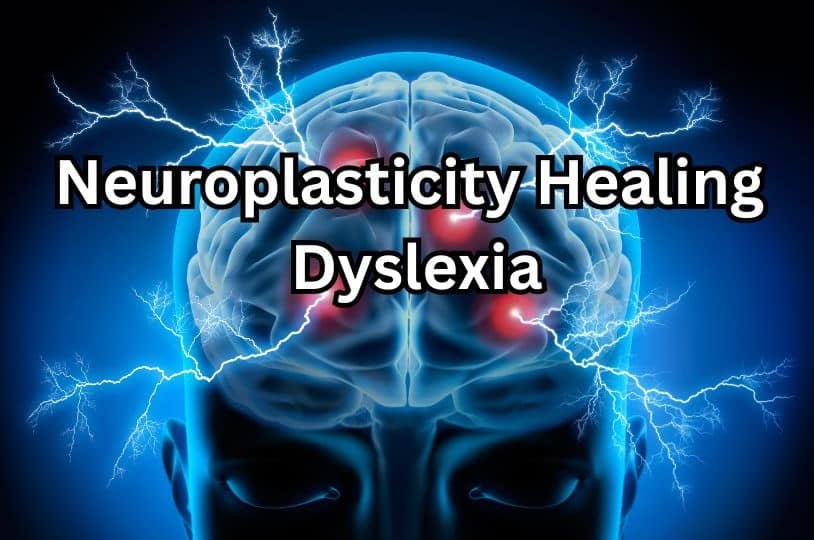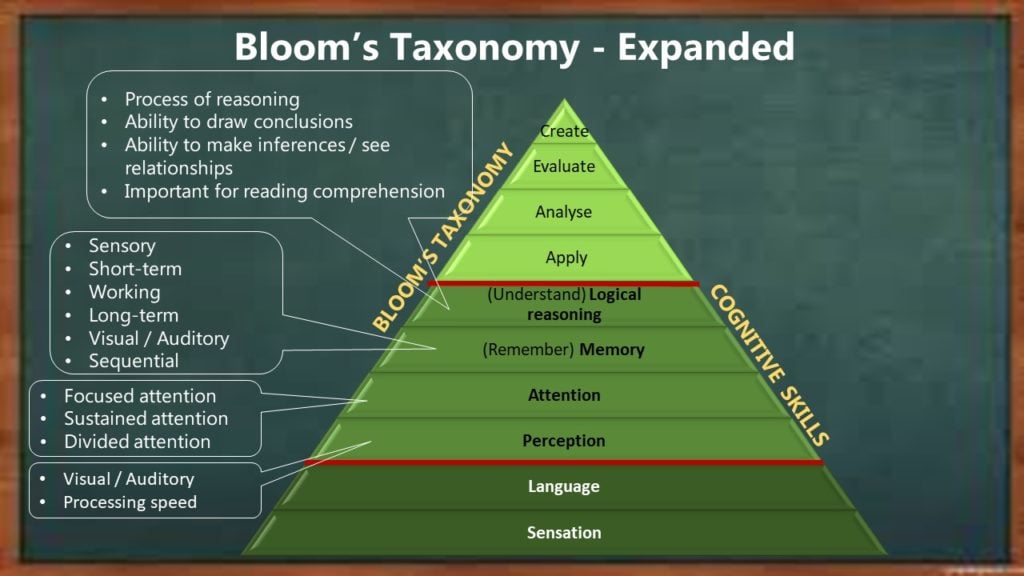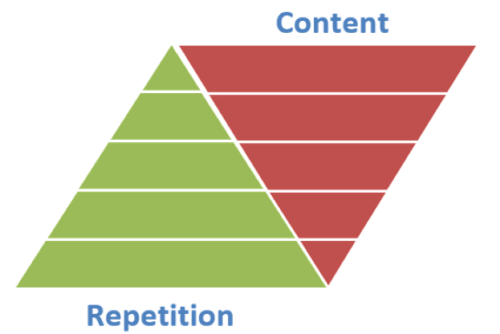
Neuroplasticity or brain plasticity refers to the brain’s ability to change in response to learning. In Part 2, we continue to delve into neuroplasticity, which, together with cognitive training, reading intervention, and proper learning principles, holds the answer to healing dyslexia.
We specialize in helping children overcome the symptoms of dyslexia. Book a free consultation to discuss your child’s learning needs.
.
Table of contents:
- Six blind men and an elephant
- Cognitive deficits underpin reading failure
- Cognitive training holds the key
- Cognitive training falls into disrepute
- The importance of learning principles
- Conclusion
Six blind men and an elephant
Six blind men came across an elephant. The first blind man ran into the elephant’s “sturdy side” and declared the animal a wall. The second felt the elephant’s tusk “so very round and smooth and sharp” and pronounced the elephant to be a spear. The third felt the squirming trunk in his hands and proclaimed the elephant a snake. The remaining three blind men declared the elephant as, respectively, a tree trunk (based on the leg), a fan (based on the ear), and a rope (based on the tail).

Scholars in the field of learning disabilities often invoke the parable of the “blind men and the elephant” to capture the state of the research literature on learning disabilities. Although there is no lack of research on the subject of learning disabilities, especially dyslexia, the theories, assessments, and treatments are so labyrinthine and contradictory as to cause one to throw one’s hands up in the air (Spear & Sternberg, 1986; MacConville, 2007; Waber, 2010; Kapur, 2011).
The term dyslexia was coined from the Greek words dys, meaning ill or difficult, and lexis, meaning word. The term refers to persons for whom reading is beyond their reach, accompanied by specific symptoms and signs such as reading slowly, making multiple errors when reading aloud, and reading with poor comprehension. Spelling and writing are usually included due to their close relationship with reading.
Much of the labyrinthine and confusion regarding dyslexia may result from researchers touching only a part or parts of the dyslexia elephant.
Cognitive deficits underpin reading failure
Researchers have always understood that even though some causes of dyslexia have a genetic origin (Kere, 2014) and environmental factors play an essential role (Stein, 2018), we need to understand the cognitive deficits that underpin reading failure, regardless of their origin (Elliott & Grigorenko, 2014). Cognitive deficits are mental blockages that hinder us from acquiring knowledge, manipulating information, reasoning, and problem-solving.
For over a century, dyslexia research has been dominated by a search for the single cognitive deficit that is necessary and sufficient to cause all behavioral characteristics of dyslexia.
Until the 1950s, the belief was that dyslexia is attributable to visual processing problems (Stein, 2018), perhaps also including motor skill problems (Nicolson & Fawcett, 2008). However, during the second half of the twentieth century, the sole culprit of dyslexia became a skill called phonological awareness. Phonological awareness means recognizing, identifying, and manipulating the individual sounds in words called ‘phonemes.’
Researchers in the twentieth century overlooked that dyslexia is a multiple deficit. Learning to read is a complex matter that relies on a conglomeration of cognitive functions, not only one or two (Pennington, 2006; Tamboer et al., 2016).
Current thinking sees phonological awareness as one of multiple deficits that are likely to interact to cause reading disability (Pennington, 2006; Peterson & Pennington, 2012). Latest studies confirm the involvement of attention, processing speed, short-term memory (the passive storage of information), working memory (the ability to manipulate information held in memory), rapid naming (the speed with which one can retrieve the names of symbols from long-term memory), and non-verbal IQ. Other studies have linked dyslexia to visuospatial abilities, visual memory, and visual long-term memory for details.
Cognitive training holds the key
If cognitive deficits accompany dyslexia, it goes without saying that cognitive training should be part of any dyslexia intervention. Moreover, since multiple deficits are involved, cognitive training should be multi-cognitive.
As Part 1 of this article explains, research at the University of Cambridge found no specific brain areas that cause learning disabilities like dyslexia (Siugzdaite et al., 2020). Instead, they discovered that children’s brains are organized around hubs, just like an efficient traffic system or social network. Children with well-connected brain hubs had no cognitive difficulties or specific cognitive difficulties, such as poor listening skills. In contrast, children with dyslexia had poorly connected hubs and widespread and severe cognitive problems, just like a train station with few or poor connections.
So, unless the learning difficulty is very specific and minuscule, addressing multiple cognitive skills is the way forward, as this approach will build brain connectivity.
A balanced, multi-cognitive approach is essential for other reasons, too. In physical training, a balanced workout is vital as overtraining one part of the body can cause deformity, such as Popeye syndrome when overtraining the biceps. The brain is no different. In Maguire’s experiment with London taxi drivers, growth in the posterior hippocampi seems to have come at a cost, as they had reduced anterior hippocampal gray matter volume compared with bus drivers, with anterior volume decreasing with more navigation experience (Maguire et al., 2006).
One should also consider the role of mutualism. A mutualistic view suggests that cognitive abilities mutually facilitate growth. For example, better reasoning skills allow individuals to improve their vocabulary more quickly, and better vocabularies are associated with faster improvement in reasoning ability (Kievit et al., 2017).
Cognitive training falls into disrepute
Unfortunately, cognitive training, popularly known as brain training, has fallen into disfavor. In one study that undoubtedly contributed to the distrust of brain training, viewers of the BBC science program Bang Goes the Theory were recruited to practice a series of online tasks for at least ten minutes a day, three times a week, for six weeks.
In one group, the tasks focused on reasoning, planning, and problem-solving abilities, which are skills correlated with general intelligence. A second group was trained on mental functions targeted by commercial brain-training programs — short-term memory, attention, visuospatial abilities, and math. A third group, the control subjects, simply used the Internet to find answers to obscure questions. A total of 11,430 volunteers aged 18 to 60 completed the study. Although they improved on the tasks, “no evidence was found for transfer effects to untrained tasks, even when those tasks were cognitively closely related” (Owen et al., 2010).
One reason why the experiment yielded no transfer effects is because the training time was too short. Subjects completed an average of 24 sessions — at ten minutes a session, a mere four hours of training. According to fitness authority Bobby Maximus (2018), becoming physically fit requires at least 130 hours. The brain is no different; even fifteen hours would have yielded meager results!
Kearns and Fuchs (2013) conducted a meta-analysis of 50 studies to determine the effects of cognitively focused instruction. They concluded that the results do “not support the use of cognitively focused instruction at this time.”
However, if one studies the type of interventions Kearns and Fuchs included in their meta-analysis, it is clear that they did not understand the meaning of “cognitive” at that time. Among the visual processing studies, for example, they used interventions “involving color reading overlays (Lovino et al., 1998), occluded lenses (Stein et al., 2000), and reading with eye-tracking control (Solan, Larson, Shelley-Tremblay, Ficarra, & Silverman, 2001).” None of these have anything to do with cognitive training!
The importance of learning principles
Cognitive psychology has now affirmed that multiple cognitive skills are involved in learning to read. Still overlooked, however, are the learning principles required to eradicate cognitive skill deficits and the teaching of reading itself. Thorndike (1874–1949) called learning principles the “laws of learning” and provided a conceptual foundation for how people learn (Alutu, 2006).
Examples of fundamental learning principles in dyslexia intervention include:
1.) Learning is a stratified process.
This is generally accepted worldwide as a didactic principle. In various educational systems, it is commonly accepted that a child must start at the lower levels of education and then gradually progress to the higher levels. This would have been unnecessary if human learning had not been a stratified process but had taken place at a single level. Starting a child in 1st grade would not have been essential. In fact, it would have been possible for the child to enter school at any level and to complete his grades in any order.
A practical example is the fact that one must learn to count before it becomes possible to learn to do arithmetic. Suppose one tries to teach a child to add and subtract when that child has not yet learned to count. It would be impossible, and no amount of effort would successfully teach the child addition and subtraction, illustrating that counting is a skill that must be mastered before learning to do calculations.
In the same way, there are specific skills and pieces of knowledge a child must have acquired before it becomes possible for them to benefit from a course in reading.
To illustrate the layeredness of cognitive skills, we expanded Bloom’s Taxonomy, a well-known model in education:

2.) Cognitive skills can only be improved through task loading.
Research shows that strategies and techniques cannot improve cognitive skills. They can only be improved through task loading, i.e., by systematically increasing the difficulty level.
In the classic experiment of Ericsson and Chase, transfer did not occur following 250 hours of short-term memory training. The student, known as SF, was required to repeat sequences of random digits. Every time he got a sequence right, a digit was added. When the experiment was concluded, SF could repeat sequences of a staggering eighty-plus random digits. However, when tested on random alphabet letters, his short-term memory performance immediately reverted to normal.
Through interviews, the researchers discovered that SF, a competitive runner, pictured an unconnected string of three or four digits as one single race time. In this way, he relieved the burden on short-term memory and, like any mnemonist, took advantage of an already existing code in long-term memory (Shenk, 2010).
One way to prevent students from using techniques or strategies is to offer a series of cognitive exercises.
3.) Automaticity is the result of repetition and practice.
Acquisition of a new skill is generally associated with a decrease in the need for effortful control over performance, leading to the development of automaticity. Automaticity, by definition, has been achieved when the performance of a primary task is minimally affected by other ongoing tasks. People often refer to automaticity by saying they can do the task “on auto-pilot” or “in my sleep.”
Examples of automaticity are everyday activities such as walking, riding a bicycle, driving a car, and speaking. Any person who speaks a language they know well does not concentrate on vocabulary, sentence construction, or grammar. Their mind is focused on what they want to say. As explained in the Journal of Learning Disabilities, “If the skill on the primary task is automatized, it will not be disrupted by concurrent processing of the secondary task because automatic processing does not take up attentional resources” (Yap & Van der Leij, 1994).
If, on the contrary, the skill is not automatized, it will be disrupted by the concurrent processing of a second skill because two skills are then competing for limited attentional resources. Therefore, when a person attempts to speak a language in which he has not yet become fluent or ‘automatic,’ they will necessarily have to divide their attention between the content of his message and the language itself. They will, therefore, speak haltingly and with great difficulty.
The same applies to the act of reading. The person in whom the underlying cognitive skills of reading have yet to become automatic will read haltingly and with great difficulty. The poor reader is forced to apply all their concentration to decoding and therefore has “no concentration left” for content. As a result, they will not be able to read with comprehension.
Automaticity is usually the result of learning, repetition, and practice. The primary process by which we develop automaticity is overlearning (also called overtraining). Overlearning is a pedagogical concept according to which newly acquired skills should be practiced well beyond the point of initial mastery, leading to automaticity.
Overlearning is frequently used by people who address audiences or perform in public. A violinist, for example, doesn’t stop learning a piece once they have initially mastered it. Instead, they continue to practice that piece until it becomes automatic, and there is little possibility of forgetting it when performing in front of a large crowd. Similarly, actors, dancers, and other musicians may calm the jitters by overlearning their parts; they improve their performances by practicing beyond the initial memorization of lines, steps, or musical notes.
4.) A “pyramid of repetition” must be constructed for the beginner learner.

This principle, derived from Suzuki’s book Nurtured by Love (1993), means that the beginner learner must start by repeating a limited amount of material many times over and over. Gradually, less and less repetition will be necessary to master new skills and knowledge.
In his book, Suzuki tells about a parrot, Peeko Miyazawa, that needed 3000 repetitions of the word “Peeko” over time before the bird could say it. However, it only required 200 repetitions of its family name “Miyazawa.” After learning to speak its name, Peeko began to imitate everything it had heard — even after one hearing. No doubt this is the same with humans (Suzuki, 1993, pp. 91-92):
Since 1949, our Mrs. Yano has been working with new educational methods for developing ability, and every day she trains the infants of the school to memorize and recite Issa’s well-known haiku. [A haiku is a short Japanese poem consisting only of three lines.] … Children who at first could not memorize one haiku after hearing it ten times were able to do so in the second term after three to four hearings, and in the third term only one hearing.
“Talent develops talent,” Suzuki concluded. “The planted seed of ability grows with ever increasing speed” (1993, p. 6).
Since the brain’s ability to change is reduced in individuals with dyslexia (see Part 1 of this article), the learning principle of building a “pyramid of repetition” is fundamental to them.
Hinshelwood (1917) also noticed — and most likely deliberately applied — the principle of building a “pyramid of repetition” in teaching reading. He wrote that for the congenitally word-blind to reach stage three (reading by sight alone) requires great determination, patience, perseverance, and persistent repetition. However, “as instruction advances, it will be found as a rule that the rate of progress gradually becomes accelerated, and obstacles, which at first seemed insuperable, are gradually overcome” (p. 108).
5.) Opportunities for application are crucial to success.
Another vital learning principle is that there must be opportunities for application. Even while learning to master the cognitive skills that form the basis of reading, a child can and should already be given opportunities to apply these skills in reading.
These fundamental learning principles should be viewed as a whole, not in isolation. Any botanist will tell you the same thing: the interaction of the amount of water, sunlight, and fertilizer will cause a tree to bear large, juicy fruit. If you only water the tree six weeks after you have hoed the fertilizer into the ground, you are bound to return to a withered tree.
Conclusion
By combining multisensory cognitive training with the systematic teaching of reading while simultaneously applying fundamental learning principles, the way is paved to improve the reading, writing, and learning abilities of children with dyslexia — and even help them completely overcome their challenges.
Watch our playlist of customer reviews and experience how Edublox training and tutoring help turn dyslexia around.
Edublox offers cognitive training and live online tutoring to students with dyslexia, dysgraphia, dyscalculia, and other learning disabilities. Our students are in the United States, Canada, Australia, and elsewhere. Book a free consultation to discuss your child’s learning needs.
Authored by Sue du Plessis (B.A. Hons Psychology; B.D.), an educational and reading specialist with 30+ years of experience in the learning disabilities field.
References:
Alutu, A. N. (2006). The guidance role of the instructor in the teaching and learning process. Journal of Instructional Psychology, 33(1), 44-9.
Elliott, J. G., & Grigorenko, E. L. (2014). The dyslexia debate. Cambridge: Cambridge University Press.
Hinshelwood, J. (1917). Congenital word-blindness. London: Lewis.
Kapur, M., (2011). Counselling children with psychological problems. Bangalore: Pearson Education.
Kere, J. (2014). The molecular genetics and neurobiology of developmental dyslexia as model of a complex phenotype. Biochemical and Biophysical Research Communications, 452(2), 236-43.
Kievit, R. A., Lindenberger, U., Goodyer, I. M., Jones, P. B., Fonagy, P., Bullmore, E. T., & Dolan, R. J. (2017). Mutualistic coupling between vocabulary and reasoning supports cognitive development during late adolescence and early adulthood. Psychological Science, 28(10), 1419-31.
MacConville, R. (2007). Looking at inclusion: Listening to the voices of young people. London: Paul Chapman Publishing.
Maguire, E. A., Woollett, K., & Spiers, H. J. (2006). London taxi drivers and bus drivers: A structural MRI and neuropsychological analysis London taxi drivers and bus drivers. Hippocampus, 16(12): 1091-101.
Maximus, B. (2023, August 4). The 130 hour rule. Retrieved from https://www.bobbymaximus.com/post/the-130-hour-rule
Nicolson, R. I., & Fawcett, A. J. (2018). Procedural learning, dyslexia and delayed neural commitment. In T. Lachmann & T. Weis (Eds.). Reading and dyslexia (pp. 229-57). Cham, Switzerland: Springer.
Owen, A., Hampshire, A., Grahn, J. et al. (2010). Putting brain training to the test. Nature 465: 775–8. https://doi.org/10.1038/nature09042
Pennington, B. F. (2006). From single to multiple deficit models of developmental disorders. Cognition, 101(2): 385-413.
Peterson, R. L., & Pennington, B. F. (2012). Developmental dyslexia. The Lancet, 379: 1997–2007.
Shenk, D. (2010). The genius in all of us. Doubleday.
Siugzdaite, R., Bathelt, J., Holmes, J., & Astle, D. E. (2020). Transdiagnostic brain mapping in developmental disorders. Current Biology, 30(7).
Spear, L. C., & Sternberg, R. J. (1986). An information processing-framework for understanding reading disability. In S.J. Ceci (Ed.). Handbook of cognitive, social, and neuropsychological aspects of learning disabilities, Volume 2 (pp. 3-32). Hillsdale, NJ: Erlbaum.
Stein, J. (2018). The magnocellular theory of developmental dyslexia. In T. Lachmann, & T. Weis (Eds.). Reading and dyslexia (pp. 97-128). Cham, Switzerland: Springer.
Suzuki, S. (1993). Nurtured by love (2nd ed.). USA: Summy-Birchard, Inc.
Tamboer, P., Vorst, H. C. M., & Oort, F. J. (2016). Five describing factors of dyslexia. Journal of Learning Disabilities, 49(5): 466-83.
Waber, D. P. (2010). Rethinking learning disabilities: Understanding children who struggle in school. New York: The Guilford Press.
Yap, R. L., & Van der Leij, A. (1994). Testing the automatization deficit hypothesis of dyslexia via a dual-task paradigm. Journal of Learning Disabilities, 27(10): 660–5.
